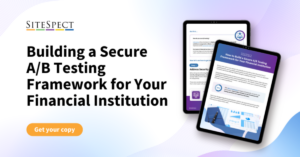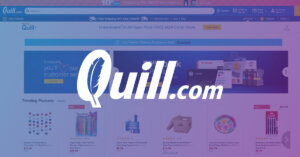8 Essential Tips for A/B Testing Success
By Kevin Plankey
June 26, 2023
Share
For digital marketers and product developers, A/B testing is critical to enabling data-driven decision-making and providing a clear understanding of product and site change impact. However, achieving meaningful results from A/B tests requires careful planning and execution. In this article, we will explore 8 essential tips that can help you unlock A/B testing success and drive impactful changes within your organization.
1. Clearly Define Your Objectives
Before embarking on an A/B testing journey, it is crucial to have a clear understanding of your goals. Whether it’s improving click-through rates, increasing conversion rates, or enhancing user engagement, defining and documenting specific, measurable, and realistic objectives will ensure you stay focused and measure the right metrics throughout the A/B testing process.
2. A/B Test a Single Hypothesis
To obtain accurate and actionable insights, it is essential to A/B test one hypothesis at a time. By isolating variables, you can identify the precise impact of a particular change on user behavior. Aim for clarity and simplicity in your experiments.
3. Gather Sufficient Data
A/B testing requires a statistically significant sample size to draw reliable conclusions. Insufficient data can result in misleading results and poor decision-making. Determine the minimum sample size needed to achieve statistical significance and ensure that your A/B test runs for an adequate duration to collect enough data. Utilize online calculators or statistical tools to estimate the sample size required for your A/B tests.
4. Segment Your Audience
Audience segmentation is a powerful technique that allows you to tailor your experiments to specific user groups. By segmenting your audience based on relevant characteristics such as demographics, behavior, or engagement patterns, you will gain deeper insights into how different segments respond to changes. This enables you to make more informed decisions and optimize your strategies for each audience segment.
5. Prioritize Your A/B Tests
Not all A/B tests are created equal. It’s important to prioritize A/B tests based on their potential impact and resource requirements. Start with high-impact A/B tests that have the potential to yield significant improvements in key metrics. By focusing on the most promising opportunities first, you can make efficient use of your resources and drive substantial results early on.
6. Implement Rigorous Experimental Design
The design of your A/B test plays a crucial role in its success. Randomization, control group selection, and consistent implementation of the changes across variations are key aspects to consider. Ensure that your A/B test setup follows best practices and eliminates any biases that could influence the results. This will ensure the reliability and validity of your findings.
7. Continuously Monitor and Analyze Results
A/B testing is an iterative process that requires careful monitoring and analysis of results. Track the performance of your A/B test variations to keep an eye out for unexpected changes in key metrics, but keep in mind the expected sample size for your campaign. Peeking too early can result in making inaccurate conclusions and premature decisions. Also, plan to repeat tests to ensure you’re getting similar results through variables such as different seasons, world events, etc.
8. Learn from Failed A/B Tests
Not every A/B test will yield positive results. It’s iterative learning that ultimately yields winning, not the other way around. Embrace failure as an opportunity to learn and refine your strategies. Analyze failed A/B tests to understand why the variations didn’t perform as expected. Extract insights that can guide future experiments and avoid repeating the same mistakes. Remember, even failed A/B tests contribute to the overall knowledge base and can pave the way for future successes.
Conclusion
A/B testing is a powerful tool for data-driven decision-making and optimizing strategies. By following these tips, you can increase the chances of success and unlock valuable insights to drive growth. Clearly defining objectives, A/B testing single hypotheses, gathering sufficient data, segmenting your audience, prioritizing A/B tests, implementing rigorous experimental design, monitoring results, and learning from failures are crucial steps to achieve meaningful results from your A/B tests. Embrace the power of experimentation, and let data guide your path to success.
Share
Suggested Posts
Subscribe to our blog:





